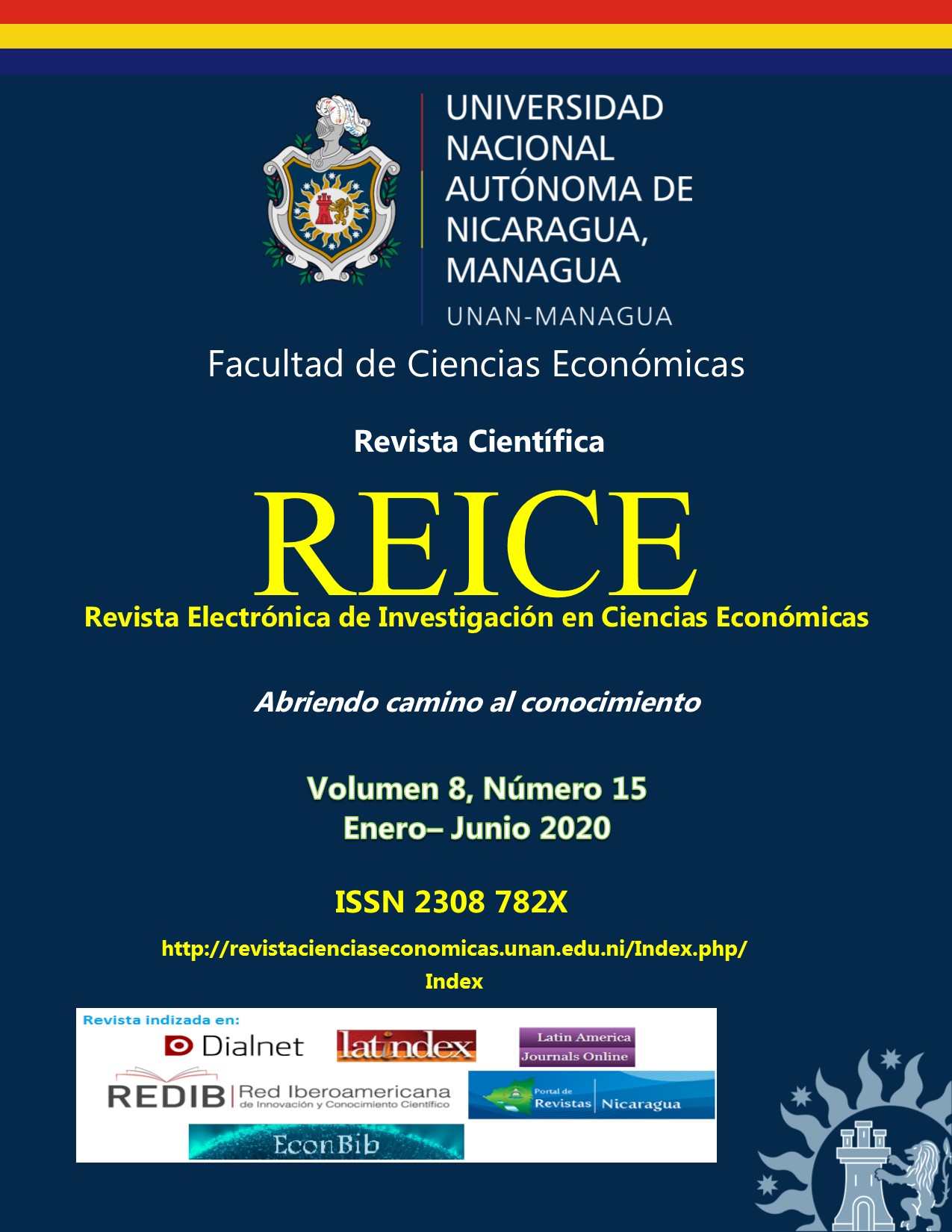The Lorenz curve and the Gini coefficient as measures of income inequality
DOI:
https://doi.org/10.5377/reice.v8i15.9948Keywords:
Income inequality, Lorenz curve and Gini coefficient.Abstract
The Lorenz curve and the Gini coefficient are tools that are used in the field of economics to measure the income inequality of a population or society. The objective of this work was to estimate the degree of income inequality of the teachers of the Master's Program in Functional Business Administration offered by the Faculty of Economic Sciences of the National Autonomous University of Nicaragua, Managua (UNAN-Managua), taught in the Business Development Center (PROCOMIN) in 2019, through the analysis of the Lorenz curve and the Gini coefficient. The equation obtained from the Lorenz curve, which served as the basis for the estimation of the Gini coefficient, was represented by L (x) = 0.6939x ^ 2 + 0.2756x + 0.0055. On the other hand, the degree of inequality obtained by means of the Gini coefficient was 0.2618, with a degree of inequality in the income of teachers of 26.18%, being this degree relatively low, given the homogeneous conditions of the study group.



